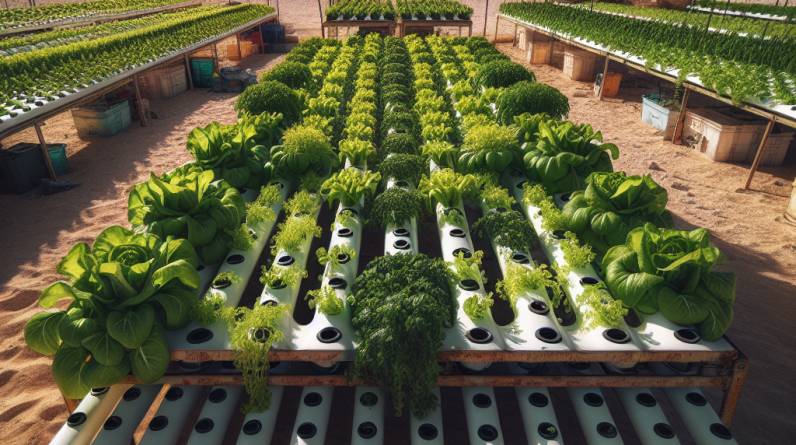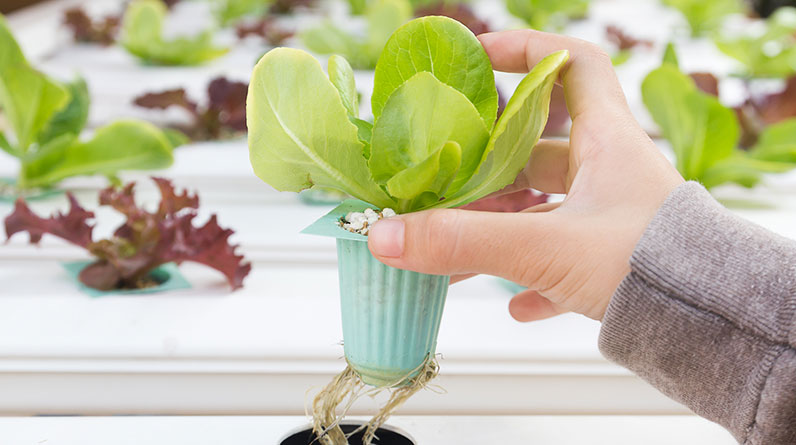
Hey there! I’ve been diving deep into hydroponics lately, especially in relation to arid climates. Let me tell you, the struggle of growing fresh veggies in dry, hot conditions can be real. But fear not! I’ve compiled what I’ve learned into five key areas that hold the secrets to success in these challenging environments. So, grab a drink, sit back, and let’s explore some cool solutions together!
Efficient Water Management Techniques
Understanding Water Usage
Water is, without a doubt, the lifeblood of any hydroponic system. In arid climates, it becomes even more crucial. I’ve found that understanding how much water we really need for various plants is key. Different plants have different water needs, and finding that sweet spot makes a huge difference in yield and sustainability.
By measuring water use meticulously, we can avoid waste that might otherwise be a problem. I’ve had my moments of overdoing it, thinking more water means better growth, but that’s just not how it works—less can be more. So keeping an eye on those levels truly pays off.
Moreover, I learned to adapt my setup to utilize a recirculating system. This way, the water used can be cleaned and reused, drastically cutting down on the total amount needed. Creating that balance really transformed my hydroponic experience!
Rainwater Harvesting
This was a game-changer for me! I started collecting rainwater whenever it did decide to show up. Designing my hydroponic system with a way to catch those precious droplets felt like such a smart hack. I’ve gotta say, it alleviates some stress knowing I have a backup source for my plants.
Plus, rainwater is usually free of the chemicals you find in tap water, which can be a boon for plant health. I’ve seen better results using rainwater than city water. It’s a bit of work setting it up, but oh boy, is it worth it!
Rainwater doesn’t come every day, especially in arid regions, but I’ve made a habit of keeping storage tanks handy—like a little reservoir of hope waiting for the next downpour!
Drip and Subsurface Irrigation
Drip irrigation is one of my favorite ways to water my plants efficiently. Letting just enough water seep out right at the roots makes a world of difference, keeping evaporation to a minimum. I feel so resourceful watching hydration happen without wasting a drop!
Pairing that with subsurface irrigation has been another winning strategy. By burying the tubes under the growth medium, I’ve noticed that less water evaporates and more goes straight into the plants’ roots. It was a total light bulb moment when I figured out that keeping the water out of the sunlight kept it cooler!
These techs sound complex, sure, but trust me, they’re not. After testing both methods, I always come back to them. It just makes sense when working in a hot, dry climate!
Choosing the Right Plants
Understanding Plant Resilience
So, here’s how I see it: not all plants were created equal, especially when it comes to drought resistance. Picking the right varieties makes my life so much easier. I’d highly recommend doing some research into which crops naturally thrive in drier conditions.
Succulents, herbs, and certain leafy greens have become my go-tos. They need less water, yet they still give me that satisfaction of eating fresh! I’ve learned that sometimes the best choice comes down to those hardy little guys that can take the heat.
Plus, choosing resilient plants helps me minimize challenges. When I’m not fighting against that unforgiving sun, I can spend more time enjoying the fruits of my labor—literally!
Companion Planting
Have you heard of companion planting? It’s like a dinner party for plants, and let me tell you—these combos are fantastic! Some plants help each other grow better, blocking pests or maintaining better soil health. It’s such a neat trick I discovered along the way!
I always consider planting crops that share similar water requirements so they’re all benefiting from the same hydration strategy. More than once, I’ve thrown herbs in alongside my leafy greens, and it’s worked wonders!
Doing this not only leads to healthier plants, but it also creates a more diverse and resilient garden setup. The more variety, the better the overall health, which is super rewarding to see.
Grow Right for Your Environment
What I learned is that location truly makes a difference. For us dealing with adverse climates, selecting native or adaptive plants is critical. They’ve evolved with the local conditions and can withstand the heat and dry spells much better than more finicky crops.
I like to check out local farms and markets to see what’s growing well in my area. It gives me some solid ideas for my own garden and brings that community vibe I love!
Also, investing a little time into understanding your specific microclimate has paid off tremendously for me. I now know when the best planting times are and which spots in my garden receive the most sunlight or shade. That knowledge is golden!
Implementing Controlled Environment Agriculture
Investing in Greenhouses
Okay, so this is where things get super interesting! I eventually decided to invest in a greenhouse. It was kind of a game changer for me because it allows me to maintain a controlled atmosphere for growing plants regardless of how brutal it is outside!
Having a greenhouse means that I can manage humidity, temperature, and light levels, creating the perfect conditions. I’ve found that once I got the hang of it, my plants were thriving and producing much more yield.
It’s a bit of an upfront investment, but the long-term benefits have been so worthy. I’ve not only saved on water, but those fresh veggies have become a staple in my kitchen all year round!
Using Hydroponic Systems
Hydroponics is like a superpower for anyone living in a dry climate! Without soil, and with fully optimized water use, I’ve been able to grow a variety of plants right in my home or greenhouse. The technology behind it can sound fancy, but it’s fairly straightforward once you get started.
I’ve experimented with different hydroponic systems like NFT (Nutrient Film Technique) and deep water culture. It blew my mind to see how effectively I could grow crops like lettuce, tomatoes, and herbs using a fraction of the water needed in traditional methods. And the growth rates? Wowza, let me tell you!
Don’t let the thought of hydroponics intimidate you. There’s a learning curve, for sure, but I’d recommend jumping in and trying things out. You’ll be amazed at what you can accomplish!
Smart Technology Integration
This has been a fun area to explore. I’ve started using sensors and automation to handle everything from pH levels to nutrient delivery. It’s like my garden has its own little tech team working behind the scenes, keeping an eye on things while I chill.
Setting up timers and sensors has allowed me to save time and worry. I just get to enjoy my garden instead of fretting about if I watered enough. Plus, I get alerts if something goes awry. Super handy, right?
Adopting these technologies doesn’t mean you have to be a tech whiz. It’s been about gradually incorporating bits and pieces, and wow, what a difference it has made in my gardening experience!
Optimizing Nutrient Management
Understanding Nutrient Needs
Nutrient management is like the secret sauce that holds everything together. I’ve learned that really understanding what nutrients my plants need at different growth stages is essential for their success. A bit of research goes a long way!
Using a hydroponic nutrient solution specially designed for my chosen plants has made things so much simpler. No more guesswork! I just follow the instructions, mix it up, and watch those babies grow.
Also, by keeping a journal of nutrient levels and plant responses, I’ve been able to refine my approach over time. It’s kind of like dating—you learn what your plants love and what makes them sulk!
Regular Monitoring
A critical step I can’t stress enough is keeping an eye on things. Regularly checking nutrient levels, pH, and overall plant health has saved me from various headaches. Trust me, ignoring this can lead you down a path of disappointment.
I often spend time assessing the health of my plants and adjusting the nutrient solution as part of my weekly routine. It’s kind of meditative, and I’ve found that it brings me even closer to my garden.
So don’t skip out on this part! Regular monitoring can mean the difference between thriving veggies and sad wilted leaves.
Applying Organic Solutions
As I leaned further into this journey, I found myself more and more drawn to using organic nutrient solutions. Organic fertilizers and compost teas have been fantastic for my plants and soothe my conscience knowing I’m not dumping chemicals into the environment.
With organic solutions, I’ve also discovered that there are ways to naturally enhance nutrient uptake. Some plants respond better to organic methods, and it helps develop a strong microflora in the root zone. I’ve loved seeing the benefits firsthand!
Why not blend the power of nature with hydroponics? I know it sounds unconventional, but I’ve seen great results, and my plants seem to thrive on this kind of care.
FAQ
Q1: What is hydroponics?
Hydroponics is a method of growing plants without soil, using nutrient-rich water instead. It’s an efficient way to cultivate crops, especially in regions where soil conditions are poor or water is scarce.
Q2: How can I manage water effectively in an arid climate?
Efficient water management techniques like drip irrigation, rainwater harvesting, and recirculating systems help minimize waste and ensure that water goes directly to the plants’ roots.
Q3: What types of plants are best for hydroponics in dry areas?
Plants that are naturally more resilient and drought-resistant, such as certain herbs (like basil and thyme), leafy greens, and native plants, tend to thrive best in hydroponic systems in arid climates.
Q4: How do I set up a simple hydroponic system?
Start with a basic setup using containers, a nutrient solution, a water delivery system (like drip irrigation), and groups of plants. There are many DIY guides online that make it simple and fun!
Q5: Can I use organic nutrients in a hydroponic system?
Yes! There are many organic fertilizers and solutions available that can be effectively used in hydroponics, promoting healthier plants and keeping the system eco-friendly.






